Review for Crazy Thunder Road
Introduction
On the one hand, the idea of a graduation film that winds up getting a theatrical distribution deal gives me pause. I’m reminded of Kichiku Dai Enkai: Banquet of the Beasts, one of the first Japanese feature films that I reviewed for this site, and which came very close to putting me off the whole thing. But on the other hand, Crazy Thunder Road is the graduation film of Gakuryu (Sogo) Ishii, renowned cult director, who has gone on to have a remarkable career. Alas, not much of that career has made it to UK home video release, with his most notable title, Burst City getting a Blu-ray release from Arrow Video. I haven’t seen that, but I have seen Isn’t Anyone Alive? released in the UK on DVD by Third Window Films, and I have a lot of time for that quirky sci-fi. I guess I’m approaching Crazy Thunder Road with an open mind...
It seems the time of the biker gangs is coming to an end; at least it seems so when the leaders get together to talk about the future. Their hearts don’t seem to be in it, especially for the leader of the Maboroshi gang, Ken, who’s only gone and fallen in love. He’s ready to disband his gang, but that doesn’t sit well with Jin, whose love of riding bikes and fighting other gangs burns unabated. Jin prompts a split, and takes half the gang with him. But his contrariness has angered the other gangs, and the more he wants to express his independence, the more everyone pushes back. Meanwhile, the former leader of the Maboroshi, Takeshi has plans for the biker gangs.
The Disc
Before the big distributors pounced on it in 1980, Crazy Thunder Road was a university graduation project that was shot on 16mm film. That reflects in the 1.78:1 widescreen 1080p transfer on this disc. Resolution doesn’t challenge the limits of the Blu-ray format, but the image is clear and presented without issue. Grain has been managed well, maintaining the filmic look without overwhelming the image with mosquito noise, even in darker scenes. Detail levels are good in brighter scenes, but night time scenes aren’t quite as clear. You get DTS-HD MA 2.0 Japanese mono audio with optional English and German subtitles. The dialogue is clear, and there are no issues with glitches or signs of age. The film makes use of a very catchy music soundtrack, which helps it punch above its low budget independent weight. The subtitles are accurately timed, but not everything is subtitled, certainly none of the song lyrics, and some of the dialogue (usually when people are talking over each other) is un-translated as well.
Extras
The disc boots to an animated menu, and you’ll find the following extras within.
Audio commentary from Tom Mes
Director Gakuryu (Sogo) Isshi Interview (38:38)
All the Right Movies: Jasper Sharp on Jishu Eiga (26:43)
The latter featurette on Jishu Eiga is of interest, looking at how amateur filmmaking and Japanese cinema intertwine, quite unlike the rest of the world.
Conclusion
When you start watching a film like this, you inevitably make connections to other films, to influences and references. Crazy Thunder Road starts off like a cross between Easy Rider and The Warriors, with a little bit of Rumble Fish thrown in, but turns into Mad Max by the end of the film. Watching these rival gangs go up against each other, in the industrial heart of Japan, late at night, tail lights streaming behind, headlights causing epic lens flares, you can bet that Katsuhiro Otomo had Crazy Thunder Road in mind when he made Akira.
It took me a little while to get into the mindset to appreciate this rough and ready student opus, the lower budget filmmaking, the compromises that had to be made when it came to actor performances, practical effects and the like, but the writing is solid, and the story is engaging. This isn’t my genre of choice however, and a cast of generally unlikeable characters, the self destructive paths they pursue, don’t exactly satisfy me by the time the end credits roll.
It’s all about the irony of ‘freedom’ in Japanese society, where even the anarchists are organised by seniority. Jin is the nail that sticks out, who goes against the flow when his gang leader announces that the gang will be disbanded. He wants freedom in the true sense of the word, to do what he wants, when he wants. And as so often happens to such nails that stick out, they get hammered down. First it’s the rival gangs who try uniting to teach him a lesson, then it’s their former leader Takeshi, who has returned with a ‘new’ organisation. It’s that aspect of Japan that rails against the nation’s capitulation at the end of the war. He’s heading a far right militia, organising and training the rebellious youth including the bikers, to fight and defend the country. Takeshi sees Jin as someone to be rescued, but once again, Jin refuses to be constrained. And as with any organised militia, independence of thought has to be punished.
To this point, I was just cruising the Crazy Thunder Road, as it felt a rather mundane and somewhat clichéd anti-establishment piece of punk filmmaking. But then someone pulls out a chainsaw, and the film takes a turn for the absurd and surreal. The characters get decidedly more bizarre, and the stakes between the antagonists just get raised higher and higher. The final act of the movie makes Crazy Thunder Road, and I can see why this film is considered a cult classic. Apparently this is the first time the film has been released outside of Japan, and after 40 years, this Third Window Films release does it justice, with an essential suite of extra features supporting the film. Having now watched it, it’s not my cup of tea, but it has to be seen to be believed.
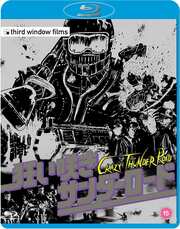









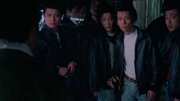

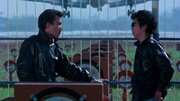





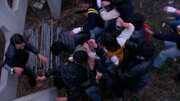

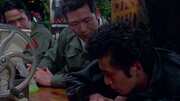


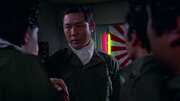
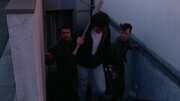




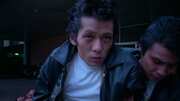


































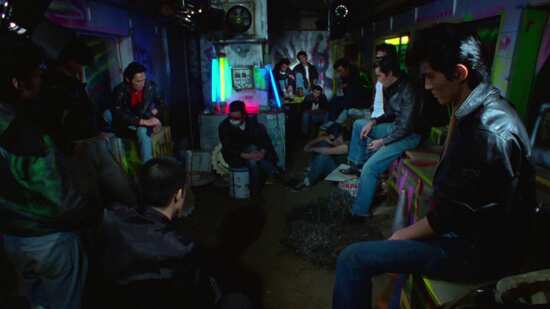

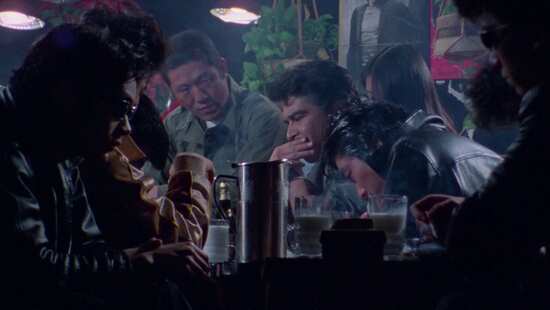




Your Opinions and Comments
Be the first to post a comment!